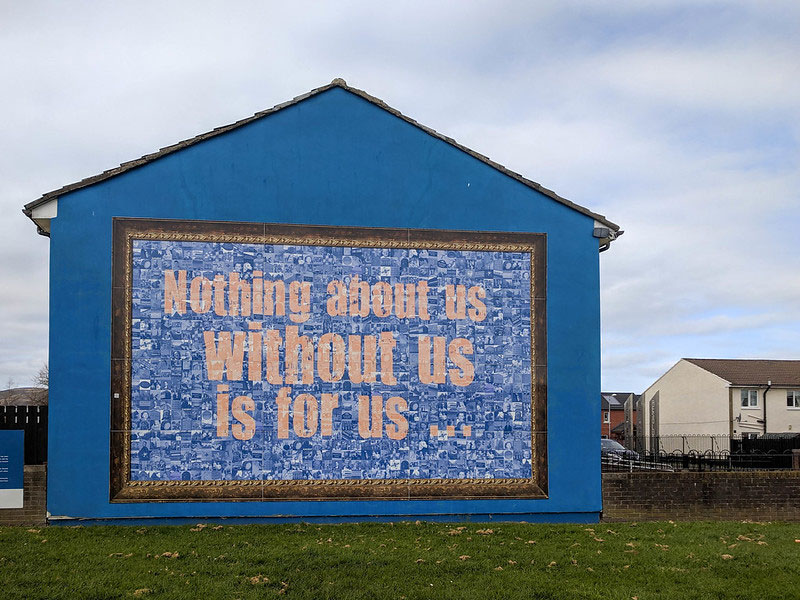
Dear Dr. Conflict
I am working as a consultant with a prestigious nonprofit board in Australasia, the members of which are politically appointed; as we have had a change of government (a shift to the right), we have a “half and half” board, with quite different values and worldviews. Over the years I have worked hard with the members to improve their boardroom culture and practice, adopt a bicultural approach to the work, and upskill themselves in community development so that they can take a more strategic approach to grantmaking and ultimately make more of a difference in their communities.
I have been asked to facilitate a board evaluation process, and the comments coming through from individuals reflect the reality in the boardroom: There is concern that factions are emerging, disappointment expressed from existing board members that what they have worked so hard for is being eroded, and an experience of increased conflict among members—all leading to decreased satisfaction in the board member experience. That members of the “right” faction are likely to be critical and dismissive of the value of the evaluation process itself makes the exercise all the more challenging.
The evaluation process is an opportunity that I would like to use to maximum effect. Any tips for assisting board members to work better together when fundamentally different worldviews and beliefs drive the differences about what is important?
Dear Dealing with Differences,
It’s tough enough to deal with differences when you have the power to influence the participants. But what if you don’t have enough power? After all, power is the “potential ability to influence behavior, to change the course of events, to overcome resistance, and to get people to do things that they would not otherwise do,” including helping board members work together when factions arise.1 Thus, Dr. Conflict’s first tip for you is to evaluate your ability to influence a successful evaluation.
There are a variety of sources of power, but they all fit into two categories—personal and positional power.2 Because you are a consultant, you have very little positional power, but you do have personal influence. Board members obviously like you enough to confide in you, and respect your expertise enough to maintain a long-standing relationship.
Not having positional power isn’t necessarily bad; effective leaders actually favor personal power to influence others.3 The bad news is that personal power can fade rapidly if people dislike you or distrust your expertise. Accordingly, your ability to influence the outcome of the evaluation is contingent upon the breadth of your personal influence. This raises questions of whether your long tenure has biased your voice and whether you have developed enough personal trust with each of the members, especially the “right” faction, as you call it.
What worries Dr. Conflict is that you write with first-person knowledge about the “disappointment from existing board members,” but you are subjective in saying “members of the ‘right’ faction are likely to be critical and dismissive.” This suggests a bias against the right-faction members, perhaps because you don’t have relationships with them. This is understandable and even inevitable given your long tenure as architect of the board development programs.
What should you do about your fractured influence? One alternative, painful as it may be, is to step aside. On the positive side, you could build your personal power significantly by shepherding the process of finding an independent evaluator. Another alternative is to reboot your brand with all of the board members, both sides of the “half and half.”
Sign up for our free newsletters
Subscribe to NPQ's newsletters to have our top stories delivered directly to your inbox.
By signing up, you agree to our privacy policy and terms of use, and to receive messages from NPQ and our partners.
Assuming a reboot, Dr. Conflict’s second tip is to pump up your influence. This begins with being clear about the agenda, which in your case has a clear visionary texture: assist the board members “to work better together when fundamentally different worldviews and beliefs drive the differences about what is important.”
The second step is a survey of the board members. There are a number of tools on the market, including BoardSource’s highly regarded assessment tools.4 Dr. Conflict uses a quick twenty-five-question survey that he developed from a study of effective teams.5
The survey will start people thinking about their interests and give you quantitative data that left-brainers need. It’s also an icebreaker for step three: one-on-one interviews with each board member, preferably in person. This will help you to gain valuable information while building personal trust. Remember that many people “fail to get things done because they rely too much on reason and too little on relationships.”6
Use the survey data to develop interview questions, but don’t forget yours about emerging factions, increased conflict, and decreased satisfaction. Ask for suggestions about your agenda to help board members “work better together.” Address the issue of the evaluation head-on by asking about its potential value. You’re worried about the members of the right faction being “critical and dismissive,” correct? See if you can gain insights into the causes and potential cures.
Step four is to map the political terrain by identifying the “players (who is in the game), power (how much clout each player is likely to exercise), and interests (what each player wants).”7 Build the map with your agenda as the horizontal axis from “opposed” on one end to “for” on the other. The vertical axis is the amount of member power, from low to high. By mapping the members, you’ll be able to quickly see the power players and where they stand on your agenda.
You’ll also see whose help you need, including those opposed to your agenda and those for it. “The basic point is simple: as a manager, you need friends and allies to get things done. To sew up their support, you need to build coalitions.”8 As you look at your map and reflect upon those first visits, you may be pleasantly surprised to see that only a few board members require your focus.
Step five is to set second meetings with your most influential members. Perhaps one of those disappointed members should have lunch, go fishing, or play golf with a few of the right-half folks. Maybe you need to arrange some visits between external players and some of your members.
Step six is to bargain and negotiate agreements. During the second meetings— and third ones, if necessary—you need to help members reach agreement around differences. You have two choices of the types of agreement. First is a value claiming, where one party forces the other to agree. That does not appear to be a realistic possibility for you. Second is a value-creating, win-win agreement that is a must-do in your situation. Fisher, Ury, and Patton advise using their four steps of principled bargaining: separate the people from the problem; focus on interests, not positions; invent options for mutual gain; and insist on objective criteria.9
If you do as Dr. Conflict advises, you’ll be strong on influence for a successful outcome: a board focused on important work and respecting the different worldviews and beliefs of its diverse members. Just one last tip: remember that doing important work doesn’t require homogenizing differences and suppressing dissent. Indeed, persistent unanimity and harmony is as sure a sign of faltering governance as the opposite.
Send your crises to Dr. Conflict
Dr. Conflict is the pen name of Mark Light, MBA, PhD. In addition to his work with First Light Group (www.firstlightgroup.com), Light is executive in residence at DePaul University School of Public Service, where he teaches strategic management, human resource management, and ethical leadership. John Wiley & Sons published his most recent book—Results Now—in 2011.
NOTES
- Jeffrey Pfeffer, Managing with Power: Politics and Influence in Organizations (Boston, MA: Harvard Business Press, 1992), 30.
- See Bernard M. Bass, Leadership, Psychology, and Organizational Behavior (New York: Harper & Brothers, 1960).
- Gary Yukl and Cecilia M. Falbe, “Importance of Different Power Sources in Downward and Lateral Relations,” Journal of Applied Psychology 76, no. 3 (June 1991): 416–23.
- “Assessments,” BoardSource, accessed May 12, 2013 www.boardsource.org/eweb/dynamicpage.aspx?webcode=Assessments.
- Mark Light, Results Now for Nonprofits: Purpose, Strategy, Operations, and Governance (Hoboken, NJ: John Wiley & Sons, 2011), 154–56. This survey is based on the study of effective teams in Carl E. Larson and Frank M. J. LaFasto, Teamwork: What Must Go Right/What Can Go Wrong (Newbury Park, CA: Sage Publications, 1989).
- Lee G. Bolman and Terrence E. Deal, Reframing Organizations: Artistry, Choice, and Leadership, 4th ed. (San Francisco: Jossey-Bass, Inc., 2008), 218.
- Ibid., 217.
- Ibid., 220.
- Roger Fisher, William Ury, and Bruce Patton, Getting to Yes: Negotiating Agreement without Giving In, 3rd ed. (New York: Penguin Books, 2011), 15.













